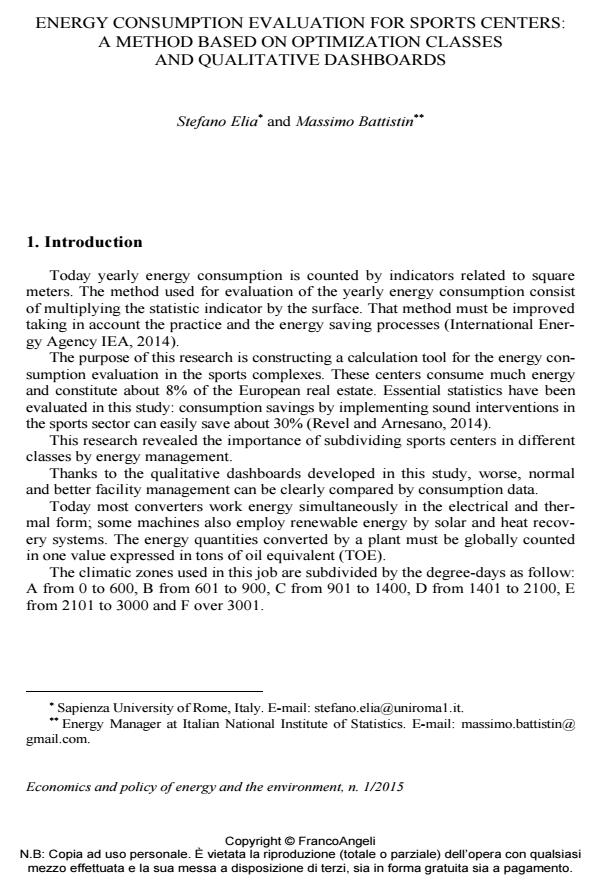Energy consumption evaluation for sports centers: a method based on optimization classes and qualitative dashboards
Journal title ECONOMICS AND POLICY OF ENERGY AND THE ENVIRONMENT
Author/s Stefano Elia, Massimo Battistin
Publishing Year 2016 Issue 2015/1
Language English Pages 12 P. 133-144 File size 301 KB
DOI 10.3280/EFE2015-001009
DOI is like a bar code for intellectual property: to have more infomation
click here
Below, you can see the article first page
If you want to buy this article in PDF format, you can do it, following the instructions to buy download credits

FrancoAngeli is member of Publishers International Linking Association, Inc (PILA), a not-for-profit association which run the CrossRef service enabling links to and from online scholarly content.
An evaluation method for sports center energy consumption is herein described. The proposed strategy can be used to estimate energy consumption at early design phase or serves as the baseline for comparison with the real consumption. About 200 sports centers - covering all of Italy - have been evaluated for energy consumption. Sports centers can be grouped into optimization classes based on a number of the saving interventions that have been implemented to save energy. The suitable saving processes are listed below. The consumption indicator of each sports center have been calculated and used in the evaluation model, representing the yearly energy consumption per surface unit of a particular sport structure, per climatic zone and per energy optimization class. The research also proved the non-linear relation between energy consumption and sports complex size. Therefore a scale factor has been calculated for each complex size and adopted. Finally, an innovative qualitative dashboard is proposed. The graphic output clearly links a consumption value to statistic data, showing a comparison with other sports centers data in the same boundary conditions.
Keywords: Dashboard, energy saving, sport center, optimization interventions, consumption indicators, mathematical model
Jel codes: L83, Q41, Q55
Stefano Elia, Massimo Battistin, Energy consumption evaluation for sports centers: a method based on optimization classes and qualitative dashboards in "ECONOMICS AND POLICY OF ENERGY AND THE ENVIRONMENT" 1/2015, pp 133-144, DOI: 10.3280/EFE2015-001009